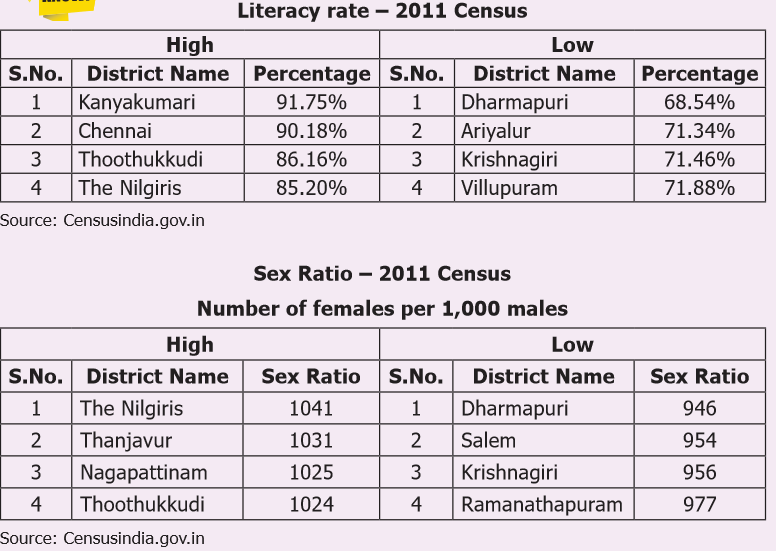Achieving Equality Notes 6th Social Science
Achieving Equality Notes 6th Social Science
6th Social Science Lesson 8 Notes in English
8. Achieving Equality
1. What is Prejudice?
Prejudice means to judge other people in a negative or inferior manner, without knowing much about them. It happens when people have false belief and ideas.
Prejudice = Pre + Judge
2. Various types of Prejudice:
The types of prejudice are gender prejudice, racial prejudice, class prejudice, disability prejudice and so on.
3. Causes for Prejudice
Some common social factors that contributes to the rise of prejudice are
- Socialization
- Conforming behaviours
- Economic benefits
- Authoritarian personality
- Ethno–centrism
- Group closure
- Conflicts
4. Define Stereotypes:
When prejudice gets stronger, it develops into a stereotype. Stereotype is a false view or idea about something. For example, girls are not good at sports.
5. Define Inequality:
Inequality means difference in treatment.
6. Different forms of Inequality:
The different forms of inequalities such as caste inequality, religious inequality, race inequality or gender inequality give rise to discrimination.
7. Define Discrimination:
Discrimination can be defined as negative actions towards people. Discrimination can happen on the basis of colour, class, religion, gender etc. Treating dark-skinned people differently from fair-skinned people, giving more importance to people of higher than to those of lower caste and thinking boys are smarter than girls are all thoughts of discrimination.
6th Social Book Back Questions
8. Which Article talks about Discrimination?
Article 15(1) of the Constitution states that the State shall not to discriminate against any citizen on grounds only of religion, race, caste, sex, place of birth or any of them.
9. End of Apartheid:
After 27 years in prison, former South African President, Nelson Mandela, was freed in 1990 and succesfully achieved the end of apartheid in South Africa, bringing peace to a racially divided country and leading the fight for human rights around the world.
10. Describe the Early Life of Ambedkar:
- He is popularly known as Baba Saheb.
- He was an Indian jurist, economist, politician and social reformer.
- He earned his M.A. in 1915 and then obtained a D.Sc at the London School of Economics before being awarded Ph.D by Columbia University in 1927.
11. Mention the Various work of Ambedkar for our Nation:
He served as the chairman of drafting committee of the constituent assembly and hence regarded as the father of Indian Constitution. He was independent India’s first Law Minister.
12. When was Ambedkar awarded Bharat Ratna?
He was posthumously awarded the Bharat Ratna in 1990.
13. Define Caste Discrimination:
Caste system is the most dominant reason for inequality and discrimination in India. In the beginning, the society was divided into different groups on the basis of occupation, known as Varnas. Many people in India have fought against caste oppression.
14. Name the prominent person who fought for Caste Discrimination:
The most prominent among them was Dr. B.R. Ambedkar. He belonged to a such depressed family and suffered discrimination throughout his childhood. He fought actively for equality among the citizens of India.
15. What is Gender Discrimination?
Gender discrimination refers to health, education, economic and political inequalities between men and women in India. For example, A girl is not allowed to go to college after finishing her schooling. Similarly, most of the girls are not allowed to select a career of their choice rather they are forced into marriage.
16. What is Religious Discrimination?
Religious discrimination is unequal treatment of an individual or group based on their beliefs. Religious discrimination has been around for a long time. There have been problems between people of different religions for thousands of years.
17. Define Socio-Economic Inequality:
In the socio-economic field, the benefits of growth have not been spread evenly. However, the income inequality is much higher than the inequality in human development. The low-income districts are associated with low industrial development, low agricultural productivity and low human development.
18. Remedial Measures for Abolishing Inequality and Discrimination :
The remedial measures for abolishing inequality and discrimination in Indian society are as follows.
- Wider access to quality basic services like healthcare and education for all.
- Be aware of current gender bias.
- Make women more visible in public life and institution to eradicate gender disparity.
- Be open to learning about other religions.
- Promoting community dining in the classroom may help the students to sit together without any bias of caste, religion or gender.
- Socialize with people of all types outside home.
- Effective implementation of laws.
19. Constitution of India and Equality
A Constitution is a set of rules and regulations guiding the administration of a country. Article 14 of the constitution of India provides equality before the law or equal protection within the territory of India and prohibits the unreasonable discrimination between persons.
20. What does our constitution tells?
Our Constitution says ours is a land of diversity; therefore, equality has to be ensured for all.
21. Name the two parameters to ensure equality:
Two significant parameters to ensure equality in society are respecting diversity and ensuring freedom.
22. Mention the various kinds of Freedom:
The different kinds of freedom are freedom to follow their religion, speak their language, celebrate their festivals and express their views freely.
23. Define Untouchability:
In India, as per the Article 17 of the Indian Constitution, untouchability is totally abolished and it’s any form is forbidden.
24. Describe the different forms of Discrimination:
Even today, different types of discrimination are reported across the country. Women, peasants, tribes and people from lower social classes are still striving for equality in India.
25. Mention the literacy rate and Sex Ratio in our Country:
